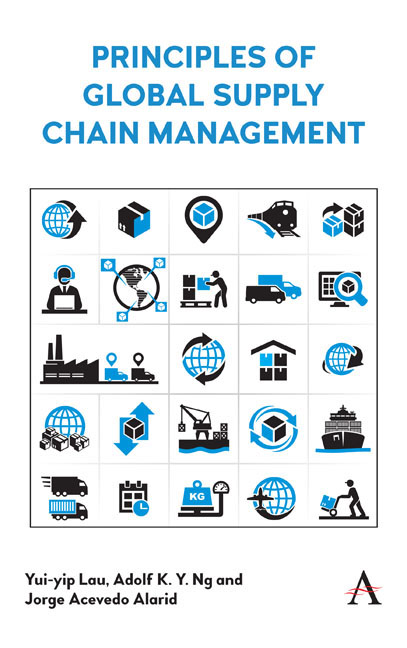Book contents
- Frontmatter
- Contents
- List of Figures
- List of Tables
- Foreword
- Preface
- About the Authors
- 1 Introduction
- 2 Managing Outbound Logistics and Distribution
- 3 Supplier Selection and Procurement
- 4 Warehouse Management
- 5 Case Studies in Food Supply Chains
- 6 Inland Ports in Global Supply Chains
- 7 Climate Change in a Global Environment
- 8 Sustainability in Infrastructure-Based Supply Chains
- 9 Reverse Logistics
- 10 Logistics Associations
- 11 Logistics Education
- 12 Case Exercises in Global Supply Chains
- Appendix
- Index
1 - Introduction
- Frontmatter
- Contents
- List of Figures
- List of Tables
- Foreword
- Preface
- About the Authors
- 1 Introduction
- 2 Managing Outbound Logistics and Distribution
- 3 Supplier Selection and Procurement
- 4 Warehouse Management
- 5 Case Studies in Food Supply Chains
- 6 Inland Ports in Global Supply Chains
- 7 Climate Change in a Global Environment
- 8 Sustainability in Infrastructure-Based Supply Chains
- 9 Reverse Logistics
- 10 Logistics Associations
- 11 Logistics Education
- 12 Case Exercises in Global Supply Chains
- Appendix
- Index
Summary
Setting the Scene
This book provides a comprehensive introduction to the understanding of global supply chains. In the twenty- first century, firms encounter untold pressures including market expansion, globalization, keen competition and increasing customer expectations in a dynamic business environment, where competitors continuously upgrade capabilities so as to remain competitive. This encourages firms to provide superior customer service and reduce total cost via upgrading logistics capabilities. Firms such as General Electric, Wal- Mart, Dell, Cisco and Southern Book Company are able to control supply chains and root out volatilities. Indeed, a competitive supply chain is the key driver for firms to accomplish a competitive edge by improving productivity, decreasing operating cost, keeping strong partnership, increasing revenue and improving customer services (Chan et al., 2012). Hence, today business competition often is “a supply chain against another supply chain” rather than a company against another company (Bowersox et al., 2013). In this regard, the boundary between logistics and supply chain management (SCM) is often confused. The former is a subgroup of SCM that covers additional issues beyond the flow of products and services and incorporates logistics into a core supply chain focused function (Tang and Lau, 2013). The Council of Supply Chain Management Professionals (2007) distinguishes logistics management from SCM. Logistics management is defined as “part of supply chain management that plans, implements, and controls the efficient, effective forward and reverse flow and storage of goods, services and related information between the point of origin and the point of consumption in order to meet customers’ requirements.” SCM, however, “encompasses the planning and management of all activities involved in sourcing and procurement, conversion, and all logistics management activities. Importantly, it also includes coordination and collaboration with channel partners, which can be suppliers, intermediaries, third party service providers, and customers. In essence, supply chain management integrates supply and demand management within and across companies.” Logistics includes all relevant processes pertaining to warehouse, materials handling, packaging, transport, distribution, reception, customer relationship management, demand forecasting, inventory management, procurement and reverse logistics, to name but a few.
- Type
- Chapter
- Information
- Principles of Global Supply Chain Management , pp. 1 - 8Publisher: Anthem PressPrint publication year: 2019



